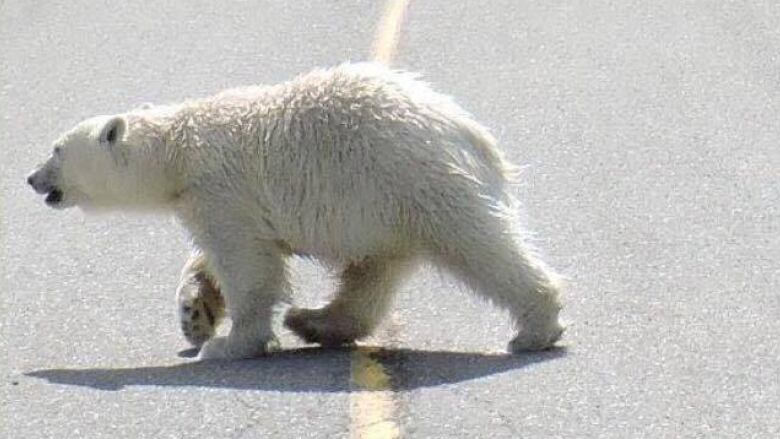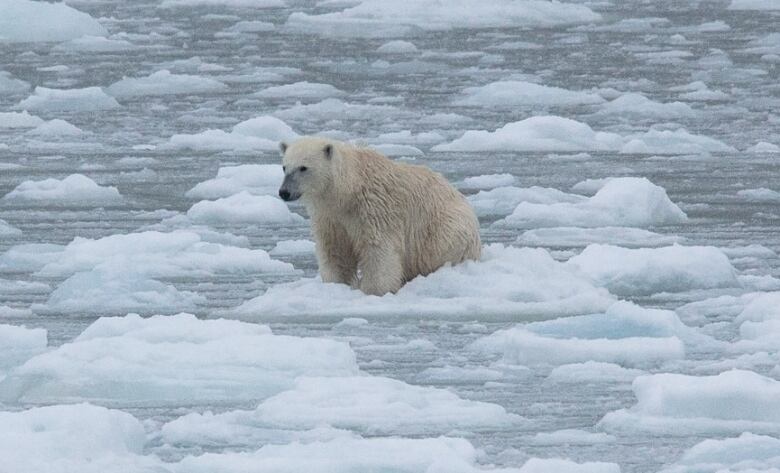Highway of ice: Easy route for polar bears chasing food, prof says
Good health, growing population increasing number of sightings

Polar bears near communities in Newfoundland are nothing new, but there seems to be more of them, according to a zoologist and evolutionary biologist.
Susan Crockford, adjunct professor of anthropology at the University of Victoria, saidweather and geographical location make their arrival inevitable.
"When the wind blows all that pack ice around it can break off chunks and move it around quite a bit," Crockford said. "If a polar bear is unlucky enough to be on one of those bits it can get moved around a lot."
Several of the animals have been spotted around the island portion of the province in March and April, including on the Burin Peninsula and the New-Wes-Valley area of the northeast coast.
The sea ice is like a highway for them.- Susan Crockford
Last week, provincial wildlife conservation officers shot and killed a polar bear they had been attempting to guide into a live trap near Little Catalina.
A bear was even photographed inSt. Mary's Bay.

Crockford said there are several factors involved in what seems to be a higher incidence of polar bear visits to Newfoundland.
There are more bears, she said, and more for them to eat.
"The population of seals is growing. Now that the market for those seals has pretty much collapsed, the only predator for those seals is polar bears. My guess is those bears are figuring out there are a lot of seals out there."
She said that in winter, the ice is further to the north, carrying huge populations of seals with it. As the spring progresses the ice and seals move further south. The polar bears follow close behind.
Bear numbers rising
Crockford said that her research indicates bears coming onto shore in winter is fairly unusual. There have several incidents in recent months that have been alarming, however.
"This year, we had a fairly longstanding incident on Svalbard, an island archipelago north of Norway that kept conservation officials there busy for a couple of weeks," she said.
"That was a mother and a couple of half-grown cubs. They were trying to keep these bears out of communities and they were fairly active using helicopters and snowmobiles to try to chase the bears off."
She said there was another incident of a polar bear near a community in the Hudson Strait in Quebec in March and another on the eastern shore of Hudson Bay.
Last year, there was an incident in Greenland where bears killed at least one horse.

Crockford said the sightings in Newfoundland all have involved polar bears that appear healthy and well-fed, which makes her believe circumstances are bringing the bears closer to shore in Newfoundland and they just walk right onto land.
"The sea ice is like a highway for them."
She said an increasing polar bear population may also be part of the reason for the sightings.
"Bears have been put on the list of threatened or vulnerable species because of concerns about what might happen in the future," she said.
"Recently, polar bears numbers have actually increased. Since 2005,just before bears were put on the endangered species list in the U.S., bear numbers have actually increased globally by 16 per cent."
With files from the Central Morning Show












_(720p).jpg)


 OFFICIAL HD MUSIC VIDEO.jpg)
.jpg)



























































































